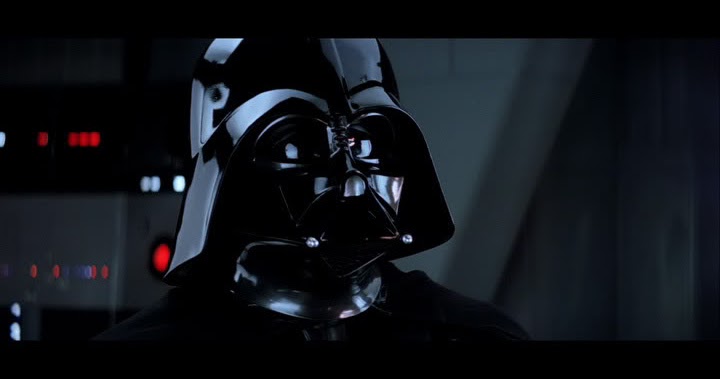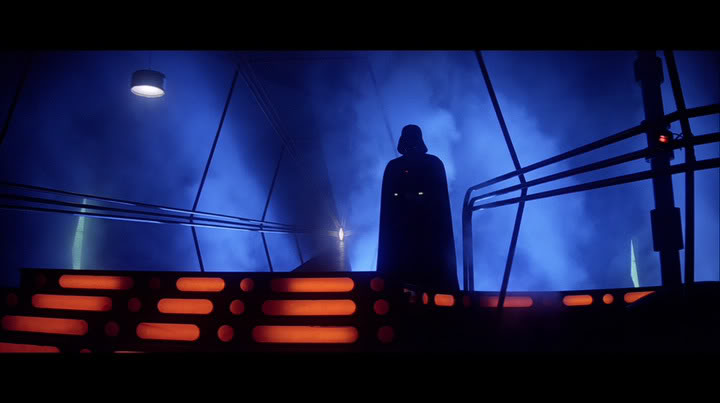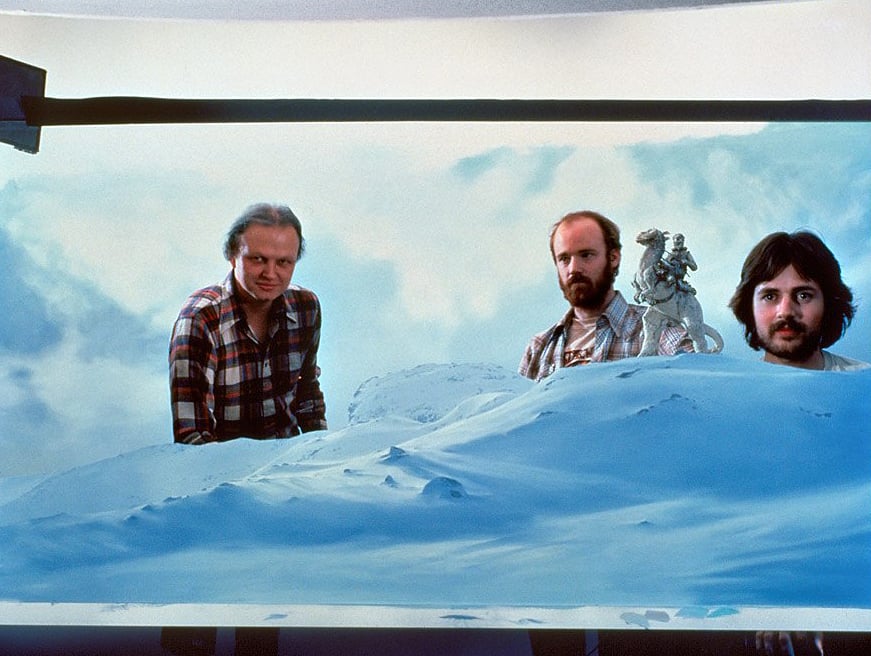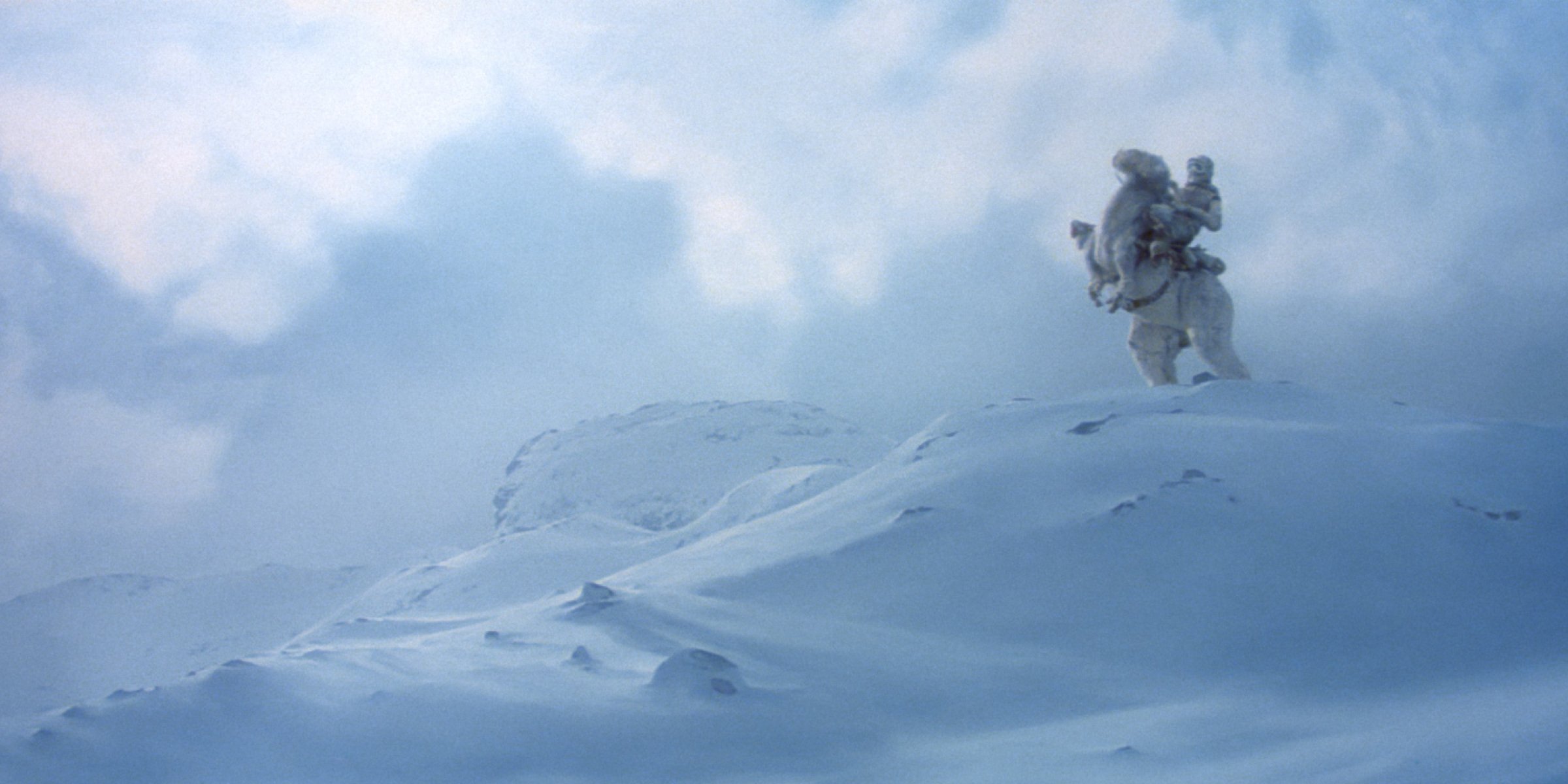#Phonepunk#
Banned
Since this year is the 40th anniversary of this classic, I've been doing lots of reading up on the making of the film. The first Star Wars was a visual wonder but in this second entry they really kicked it up a notch. The coolest thing I've read so far has been this interview with Director of Photography Peter Suschitzky. He explains in great detail how they came up with the more dramatic, moody, artistic approach, including some of the interesting tricks they had to use to get certain shots. Some excerpts:
- snip -
QUESTION: How do you define your normal lighting techniques?
SUSCHITZKY: Well, I like to think that I change the lighting according to the demands of a scene and the set. In my work the lighting generally always evolves out of how the scene is played and how the set looks. Thus, I am never 100 percent sure of what I am going to do before we shoot. Naturally, I have to know approximately what I am going to do, because I have to plan what's going to be rigged. I think that when you see The Empire Strikes Back, you will see that there are scenes which have hard light and are extremely contrasty, stretching the limits of the emulsion, and some have soft light. Some are lit from underneath, some from overhead, and some from behind. I hope that this apparent disparity of styles will actually bring its own sort of unity to the film and won't create a fractured effect. I actually feel that there is an internal unity to the lighting style, but there wasn't one imposed from the outside that said that we were going to light everything from the right or the left, or that it all had to be soft light or hard, all on a wide-angle or a telephoto. The style varies from sequence to sequence, but I really think that it has its own unity.
QUESTION; Were there any lighting set-ups of a particularly unique character?
SUSCHITZKY: There were some very tricky set-ups indeed. We had one set with a glass tube in the middle of it, with Luke Skywalker suspended in a kind of liquid. I don't know whether the scene survives in its entirety in the finished film, but I had to devise a method of lighting this tube so that it would be very bright and the rest of the scene would be extremely low key—the tube would be the main source of light in the set—and I hit upon the idea of suspending a large mirror halfway up the studio above the set and a searchlight down below. The light from the searchlight would bounce off the mirror, which worked marvelously well until the mirror shattered once or twice, I believe, from the heat of the searchlight. There were other sets which presented their own difficulties.
QUESTION: What were some of your other challenges?
SUSCHITZKY: There was another set in which a sword fight was to take place between two of the characters. When I looked at that set it struck me as being rather like a model for a stage set. In other words, it looked unfinished. It certainly had no walls at all; it was a series of ramps and discs and blackness. I was extremely concerned about that set and I thought about it a lot, about how I was going to make it work and look believable and look dramatic. Then I decided to light the whole thing from underneath, as the floors had been made translucent. In the black areas I placed Brutes and had shafts of light penetrating the darkness. Then the whole set was filled with steam, which made it photographically very impressive, but physically very uncomfortable, since it was like working in a Turkish bath. We were quite high up in the stage and we all suffered for quite a number of weeks, but it was one of those sets which made me fell uneasy before I entered into the shooting of it because it looked so unreal, so unworldly and unlike anything I had ever done before. I was concerned about it looking dull, in fact, because although there seemed to be plenty of material in the set, it was all either on the floor or on the ceiling. The fact is that unless one goes for extreme angles (and you usually can't do that right through a long sequence), the camera is pointing straight ahead and not up or down. There was nothing for the eye to look at straight ahead except blackness, because all the set elements were on the floor or the ceiling. I was concerned about the scene looking interesting and about the eye having something to look at—but, in the end, I think we succeeded in overcoming those problems—all of us working together.
QUESTION: Are there any other particularly unusual lighting set-ups that you can recall?
SUSCHITZKY: I can recall many, but they would not be too unusual. However, I can recall one instance when we were filming inside what we called "Cloud City". I think it comes toward the end of the film, and it was basically a series of corridors and one long hall. Although we had quite a few corridors, one often wants to make a set look bigger than it really is. For example, in one particular shot—where the camera tracked down a corridor, around a corner, up another corridor, and then back into the same corridor—I wanted to make the return into the same corridor look like a different one. So whilst the camera was round the corner, I worked out a series of light changes to be done rapidly during the shot, so that by the time we got back into our old territory, it looked like a new and differently lit corridor. I think the film was full of demands upon the mind like that, which amused me tremendously and made the whole thing much more interesting than it normally would be.
QUESTION: To what extent did you have to plan your work to accommodate special effects?
SUSCHITZKY: I have never been involved in a film with quite so many effects—and half-finished sets which will look finished when the matte work is done at the end. All of that needed very careful planning, because it was quite obvious that my lighting of a part of the set (the rest of which was to be matted in) would commit the matte artist to a certain way of painting his matte, and it required an act of imagination to try to picture in my mind what the thing was going to look like when he finished. In regard to that and the many other complex technical problems inherent in this production, I just want to mention that I was immediately impressed with the seriousness with which George Lucas and Gary Kurtz approached the project—to the point where I have to say that I've never worked with producers who had such thorough technical knowledge of the medium. They were very keen that we should get the best possible result on the screen. They said, "What do you want to test? Which cameras do you want to test?" So I had total freedom to bring in any anamorphic system I wanted—not that the choice is great. I was even approached by one man in this country who was trying to persuade me to use a three-dimensional system, but when I asked him whether it had been used before, he said that it had only been tested in Moscow. I thought it best to put that out of mind for a few years.
QUESTION: In summing up, do you have any final observations regarding your assignment on The Empire Strikes Back?
SUSCHITZKY: Only that I haven't enjoyed myself so much on a film for a very long time. I worked with a director with whom I really got along tremendously, who encouraged me to do my utmost, and so I had a ball on it really, and lots of large toys to play with. What more could one want?
- snip -
Full article here
BONUS ARTICLE By Richard Edlund, ASC, Special Visual Effects Co-Supervisor
this one is really technical and in depth, he goes into how they built everything from studios to cameras
Last edited:

